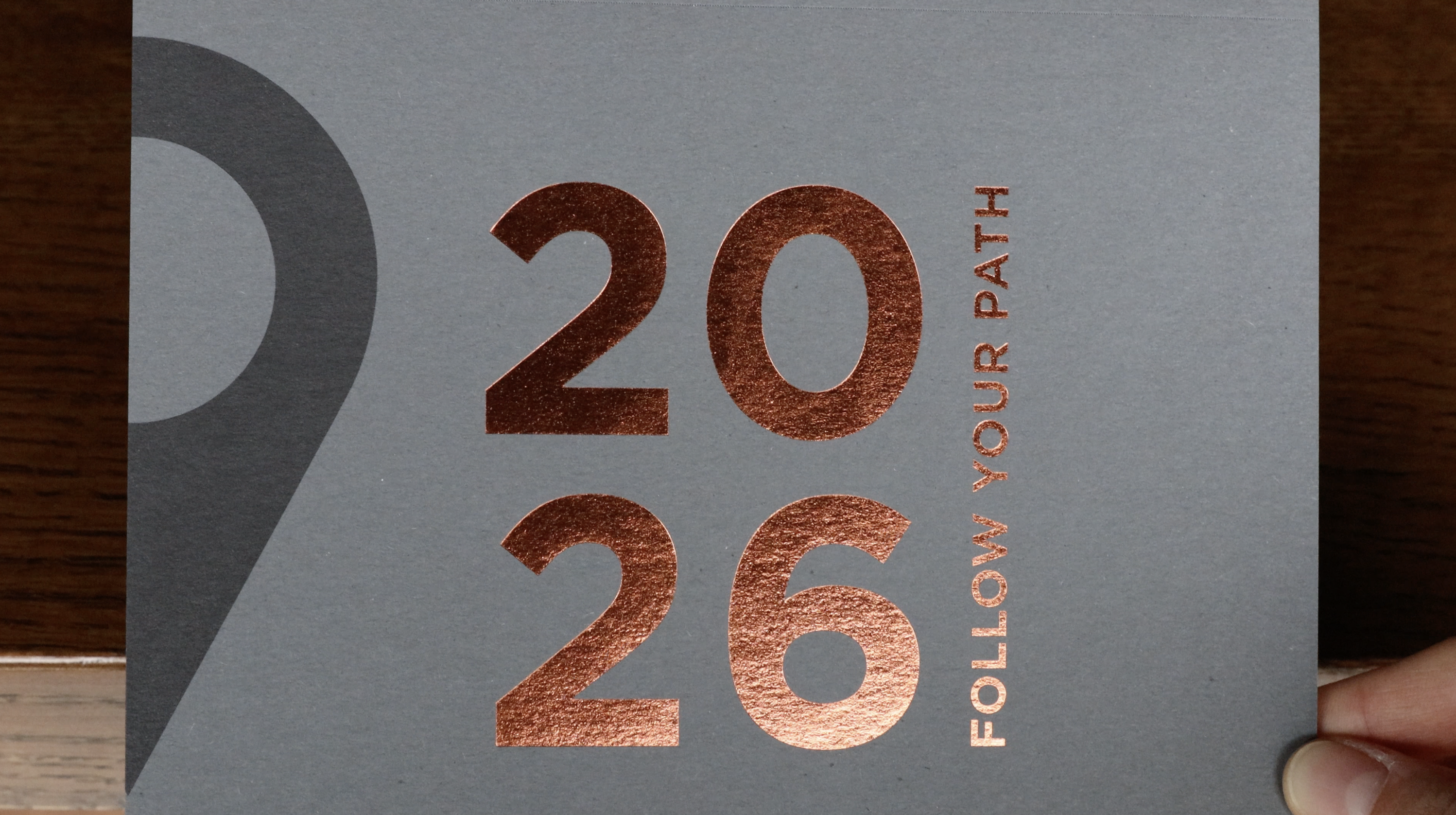
Menu
Menu
Here’s something you don’t expect to say before lunch: “We’re wallpapering the ceiling.”
But there I was, standing in the middle of a three-story stairwell, looking up at a lot of overhead real estate and thinking: Okay. Let’s do this.
In this job, walls are never just walls. Sometimes they’re the sky. Sometimes they’re medieval stone. Sometimes they wrap around columns or stretch across elevator lobbies or—yes—climb up ceilings that most people never thought to decorate. That’s the fun of it. Wide format wall graphics turn blank surfaces into storytelling tools. You just have to know where (and how) to start.
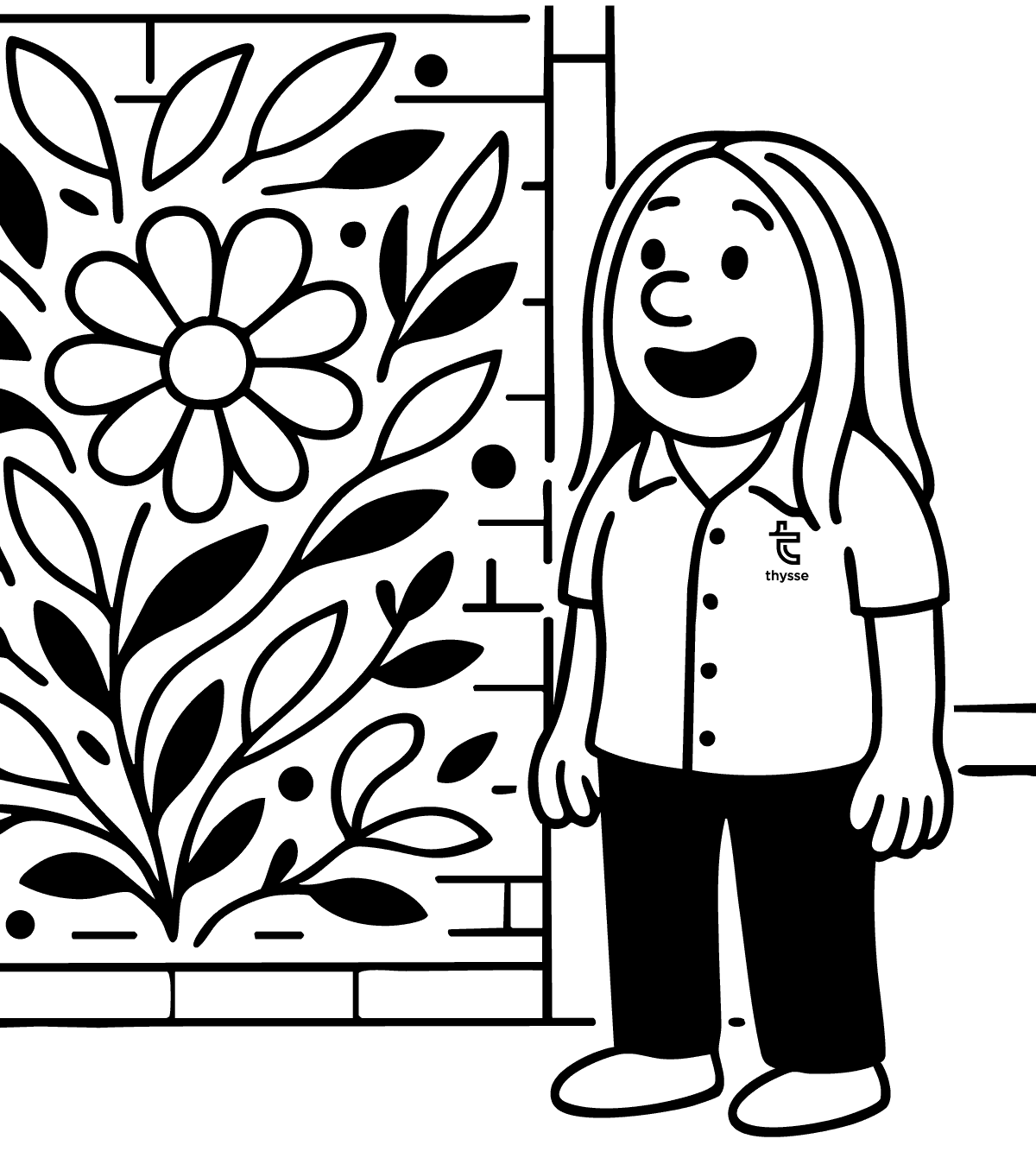
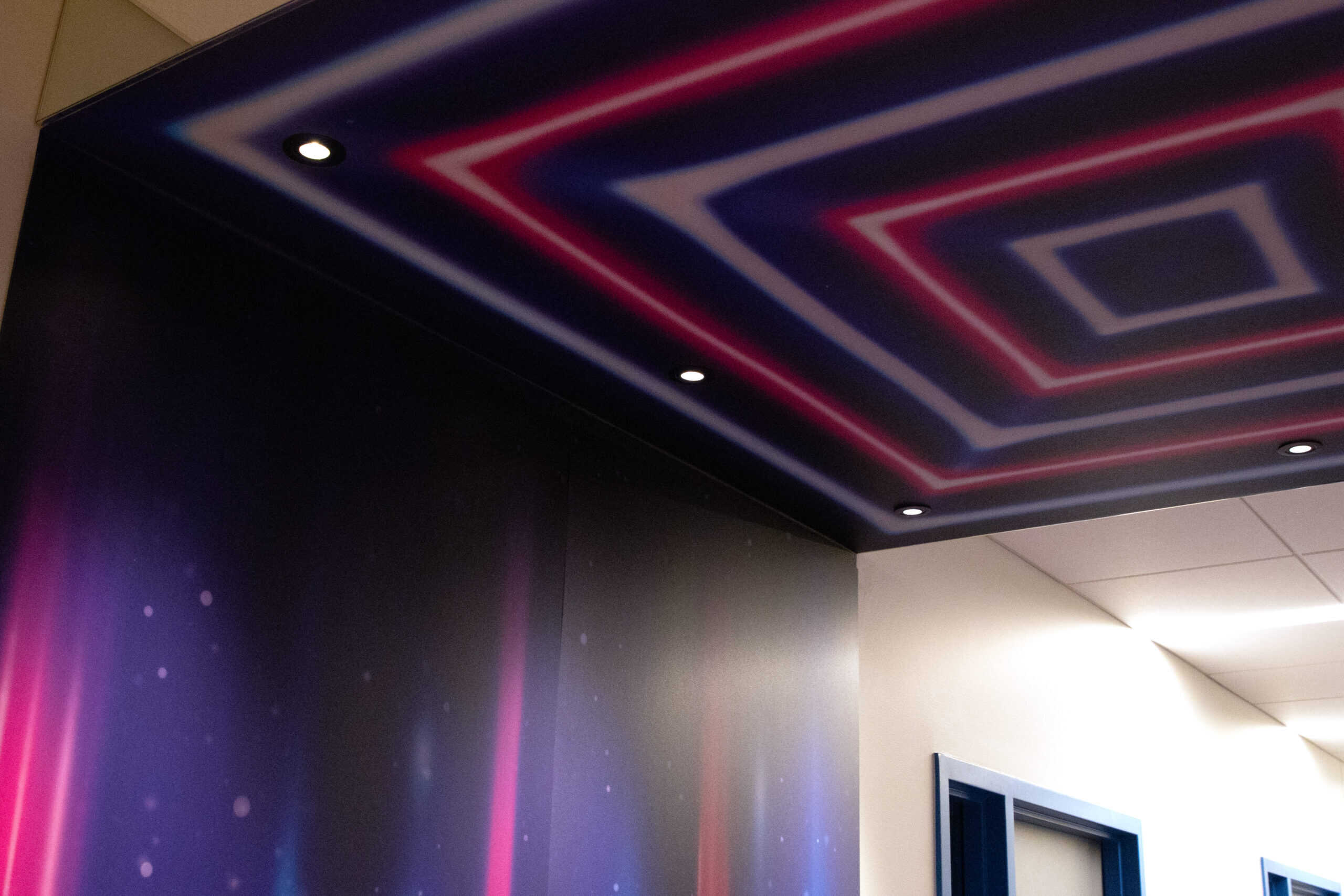
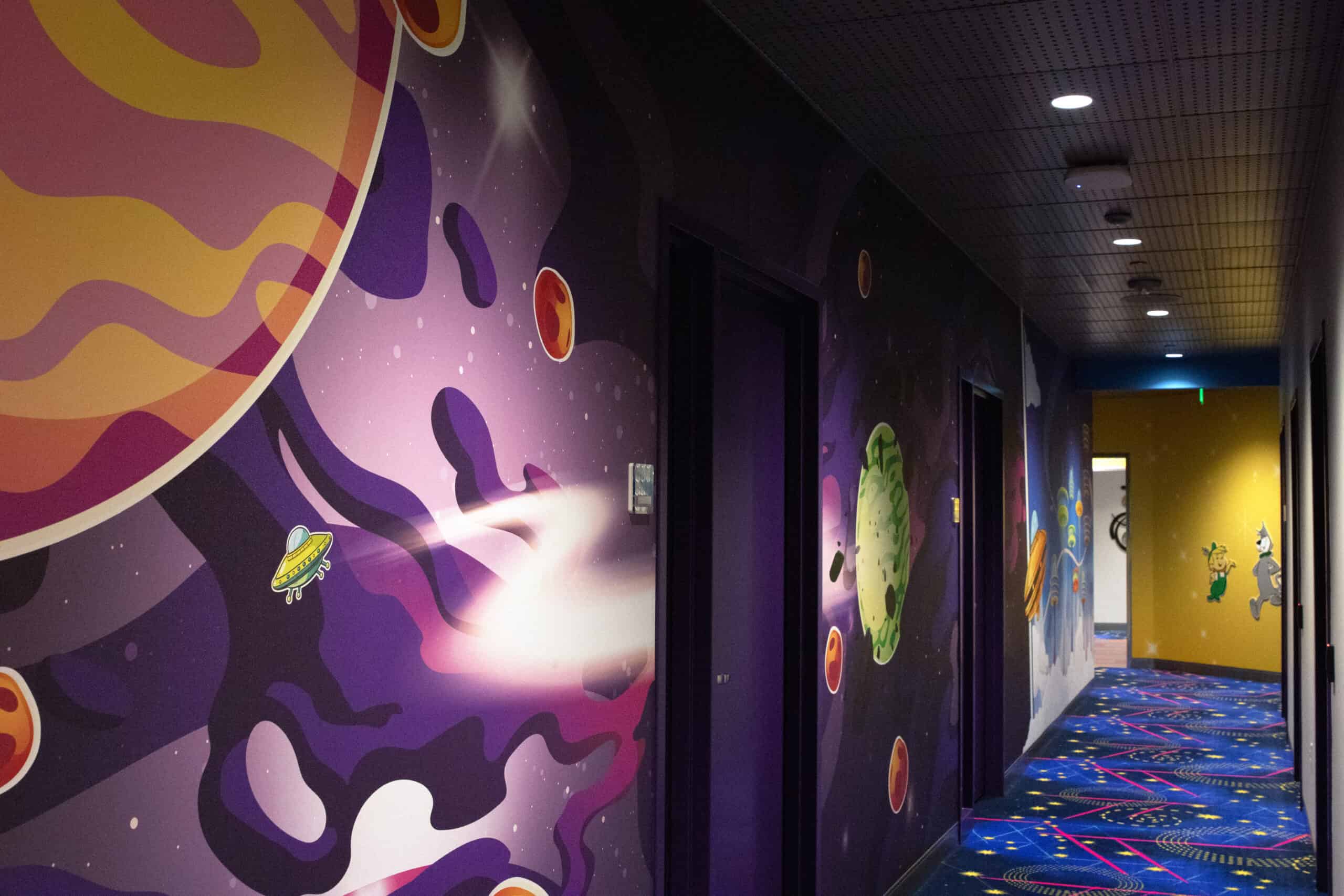
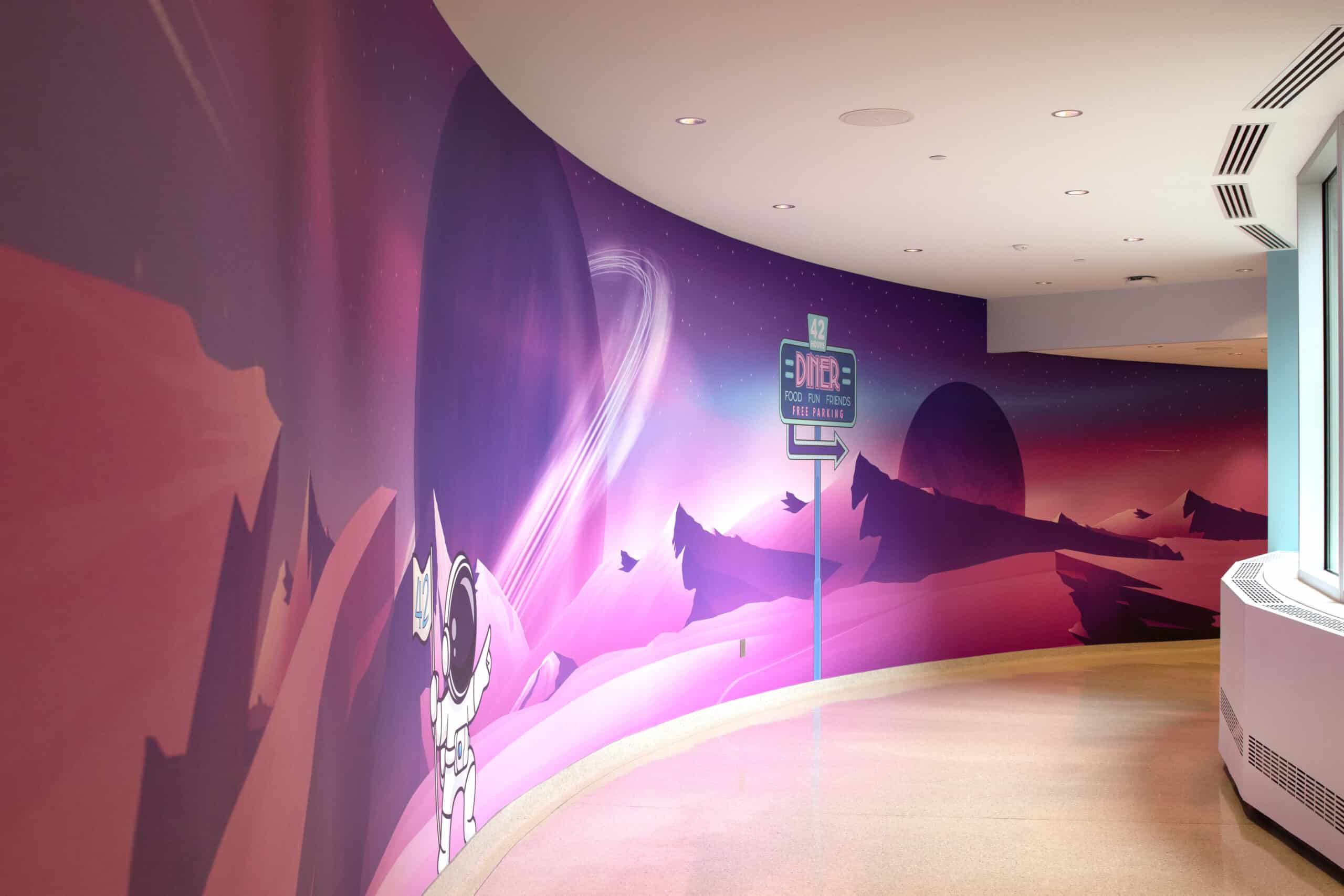
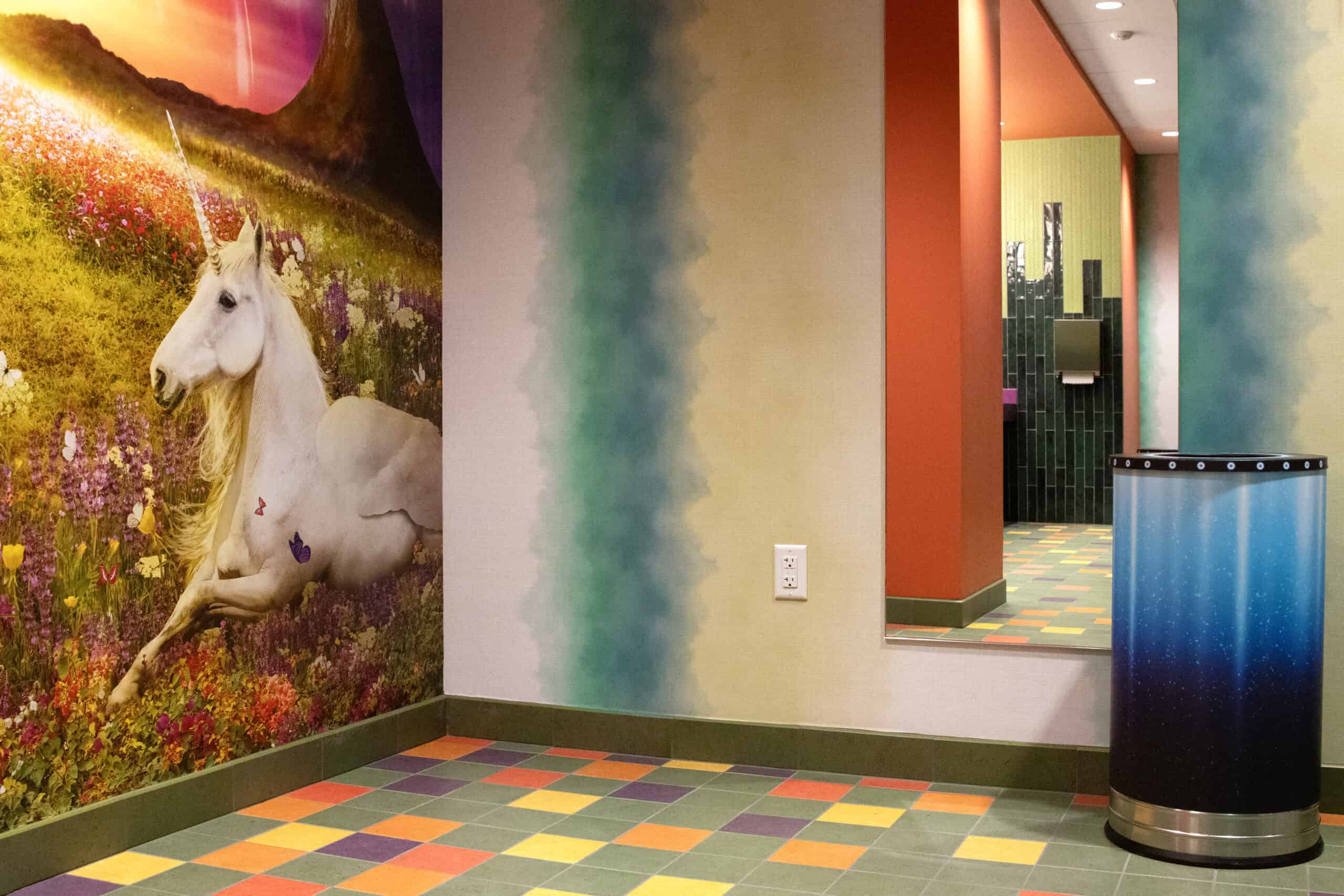
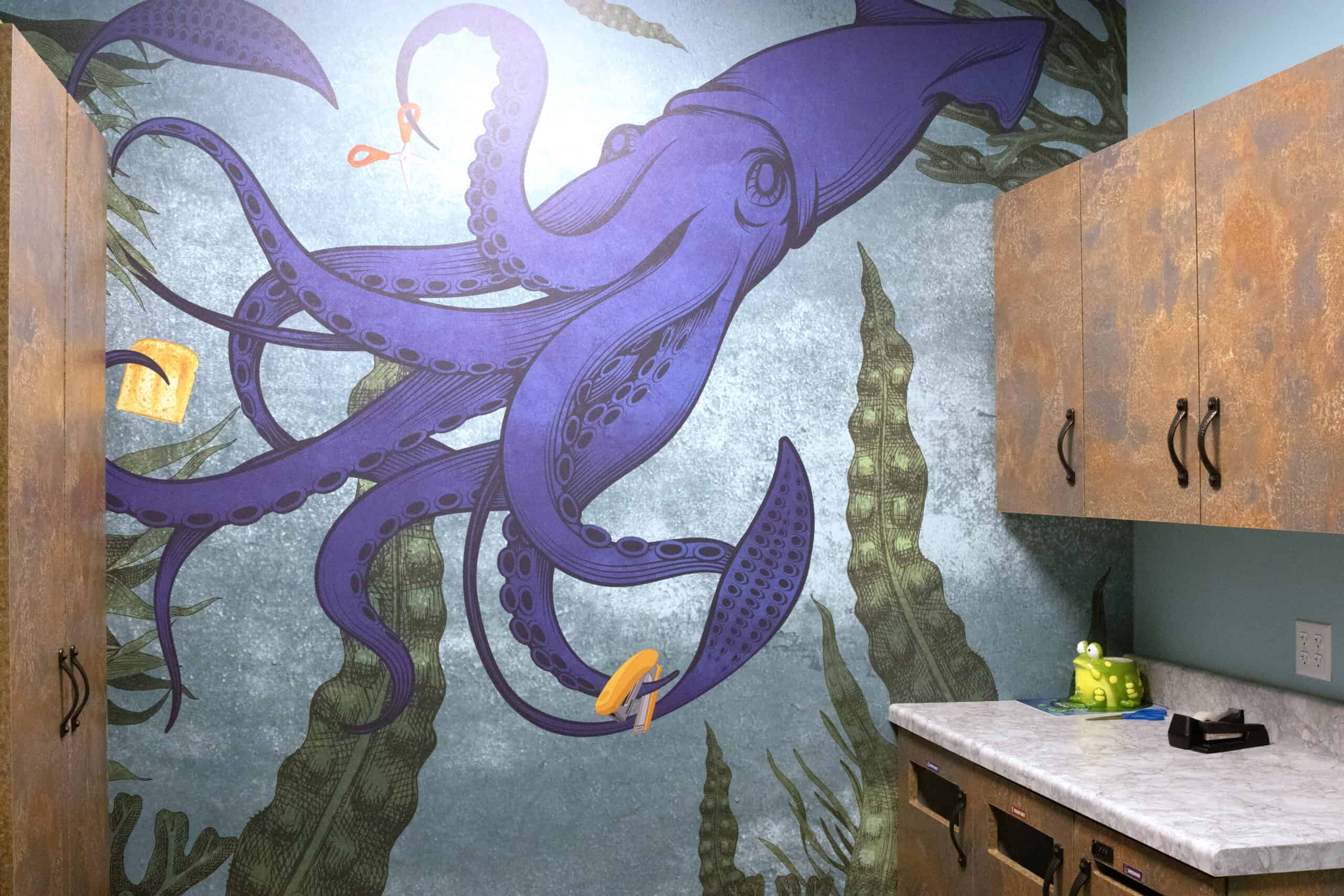
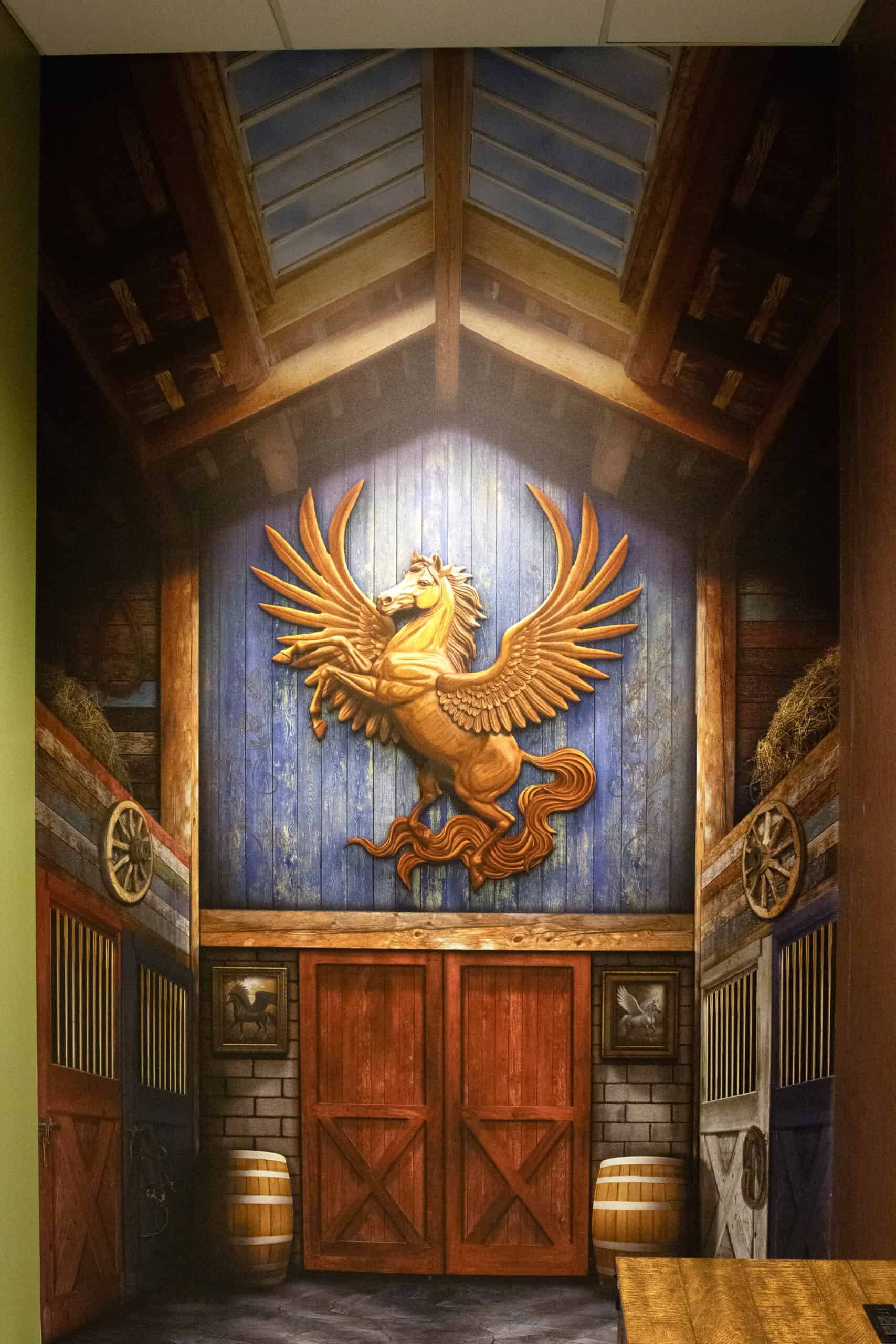


Step one: know what you're working with. That means getting accurate, field-verified measurements—not just the height and width of a wall, but where every outlet, camera, fire alarm, defibrillator, or rogue wall sconce lives. We’ve learned (the easy way, thankfully) that nothing throws off a gorgeous design like a surprise thermostat.
Once we’ve got measurements and reference photos, we coordinate with designers, proof colors directly on the actual wallpaper material, and prep the files for print. Larger graphics get tiled with thoughtful overlap—so seams disappear and people’s faces stay intact. (Nothing like a perfectly placed seam through someone’s forehead to ruin the vibe.)
When the panels come off the press, we check them again, label them in install order, and package them for delivery like they’re headed to the Louvre. Because if they get smooshed in transit, it’s no one’s best day.
We also include install diagrams, reference photos, and a full breakdown of what goes where. Think IKEA instructions, but for wallpaper—and with fewer arguments.
These projects have range. We’ve transformed blank corridors into immersive environments, made ceilings feel like forest canopies, and turned stairwells into layered, colorful moments of surprise.
One of my favorites? A themed feature stairwell where the walls changed color and pattern on each level, with matching ceiling wraps above. Another? Columns wrapped to look like stone—giving the whole space a castle-like feel without ever lifting a single brick.
And the best part? These elements are changeable. When the space needs a refresh in a few years, we don’t need demolition crews—we just bring the ladder and the next great idea.
You can feel it when a space has its act together.
It’s not just the lighting or the flooring—it’s that someone thought about how the whole thing fits. Graphics help with that. They guide people. They set tone. They can make a corporate office feel like a brand, not just a building.
In retail, they pull you in—or, depending on the brand, they practically yell you in. (And yes, some of mine do.) In healthcare or education, they can calm, energize, or just help people find the right door. It’s all about using the space with intention—not just decoration.
Because projects like this need more than good ideas—they need someone keeping an eye on how it all comes together.
We’re usually brought in early, working alongside builders and facilities to get a handle on wall finishes, install access, timelines—things that seem small until they aren’t. From there, we loop in the right people—design, production, install—and keep the process moving.
It’s a team effort, but someone’s got to make sure it all lands in the right place, at the right time, and still looks like it was effortless.